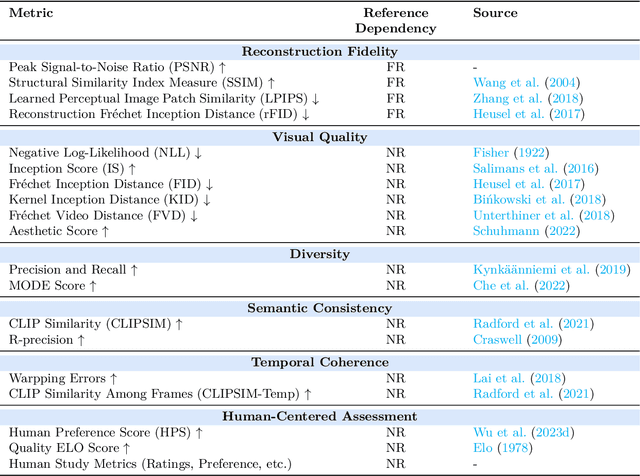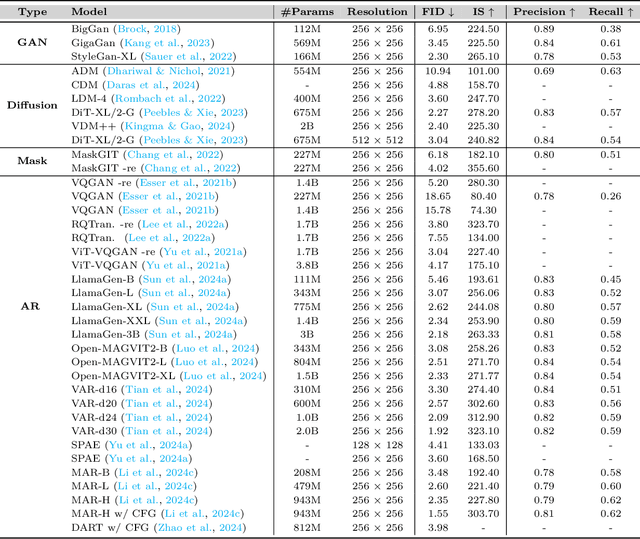Shen Yan
Generalizable Multispectral Land Cover Classification via Frequency-Aware Mixture of Low-Rank Token Experts
May 20, 2025Abstract:We introduce Land-MoE, a novel approach for multispectral land cover classification (MLCC). Spectral shift, which emerges from disparities in sensors and geospatial conditions, poses a significant challenge in this domain. Existing methods predominantly rely on domain adaptation and generalization strategies, often utilizing small-scale models that exhibit limited performance. In contrast, Land-MoE addresses these issues by hierarchically inserting a Frequency-aware Mixture of Low-rank Token Experts, to fine-tune Vision Foundation Models (VFMs) in a parameter-efficient manner. Specifically, Land-MoE comprises two key modules: the mixture of low-rank token experts (MoLTE) and frequency-aware filters (FAF). MoLTE leverages rank-differentiated tokens to generate diverse feature adjustments for individual instances within multispectral images. By dynamically combining learnable low-rank token experts of varying ranks, it enhances the robustness against spectral shifts. Meanwhile, FAF conducts frequency-domain modulation on the refined features. This process enables the model to effectively capture frequency band information that is strongly correlated with semantic essence, while simultaneously suppressing frequency noise irrelevant to the task. Comprehensive experiments on MLCC tasks involving cross-sensor and cross-geospatial setups demonstrate that Land-MoE outperforms existing methods by a large margin. Additionally, the proposed approach has also achieved state-of-the-art performance in domain generalization semantic segmentation tasks of RGB remote sensing images.
Model Merging in Pre-training of Large Language Models
May 17, 2025Abstract:Model merging has emerged as a promising technique for enhancing large language models, though its application in large-scale pre-training remains relatively unexplored. In this paper, we present a comprehensive investigation of model merging techniques during the pre-training process. Through extensive experiments with both dense and Mixture-of-Experts (MoE) architectures ranging from millions to over 100 billion parameters, we demonstrate that merging checkpoints trained with constant learning rates not only achieves significant performance improvements but also enables accurate prediction of annealing behavior. These improvements lead to both more efficient model development and significantly lower training costs. Our detailed ablation studies on merging strategies and hyperparameters provide new insights into the underlying mechanisms while uncovering novel applications. Through comprehensive experimental analysis, we offer the open-source community practical pre-training guidelines for effective model merging.
Seed1.5-VL Technical Report
May 11, 2025Abstract:We present Seed1.5-VL, a vision-language foundation model designed to advance general-purpose multimodal understanding and reasoning. Seed1.5-VL is composed with a 532M-parameter vision encoder and a Mixture-of-Experts (MoE) LLM of 20B active parameters. Despite its relatively compact architecture, it delivers strong performance across a wide spectrum of public VLM benchmarks and internal evaluation suites, achieving the state-of-the-art performance on 38 out of 60 public benchmarks. Moreover, in agent-centric tasks such as GUI control and gameplay, Seed1.5-VL outperforms leading multimodal systems, including OpenAI CUA and Claude 3.7. Beyond visual and video understanding, it also demonstrates strong reasoning abilities, making it particularly effective for multimodal reasoning challenges such as visual puzzles. We believe these capabilities will empower broader applications across diverse tasks. In this report, we mainly provide a comprehensive review of our experiences in building Seed1.5-VL across model design, data construction, and training at various stages, hoping that this report can inspire further research. Seed1.5-VL is now accessible at https://www.volcengine.com/ (Volcano Engine Model ID: doubao-1-5-thinking-vision-pro-250428)
Efficient Pretraining Length Scaling
Apr 21, 2025Abstract:Recent advances in large language models have demonstrated the effectiveness of length scaling during post-training, yet its potential in pre-training remains underexplored. We present the Parallel Hidden Decoding Transformer (\textit{PHD}-Transformer), a novel framework that enables efficient length scaling during pre-training while maintaining inference efficiency. \textit{PHD}-Transformer achieves this through an innovative KV cache management strategy that distinguishes between original tokens and hidden decoding tokens. By retaining only the KV cache of original tokens for long-range dependencies while immediately discarding hidden decoding tokens after use, our approach maintains the same KV cache size as the vanilla transformer while enabling effective length scaling. To further enhance performance, we introduce two optimized variants: \textit{PHD-SWA} employs sliding window attention to preserve local dependencies, while \textit{PHD-CSWA} implements chunk-wise sliding window attention to eliminate linear growth in pre-filling time. Extensive experiments demonstrate consistent improvements across multiple benchmarks.
CAFe: Unifying Representation and Generation with Contrastive-Autoregressive Finetuning
Mar 25, 2025Abstract:The rapid advancement of large vision-language models (LVLMs) has driven significant progress in multimodal tasks, enabling models to interpret, reason, and generate outputs across both visual and textual domains. While excelling in generative tasks, existing LVLMs often face limitations in tasks requiring high-fidelity representation learning, such as generating image or text embeddings for retrieval. Recent work has proposed finetuning LVLMs for representational learning, but the fine-tuned model often loses its generative capabilities due to the representational learning training paradigm. To address this trade-off, we introduce CAFe, a contrastive-autoregressive fine-tuning framework that enhances LVLMs for both representation and generative tasks. By integrating a contrastive objective with autoregressive language modeling, our approach unifies these traditionally separate tasks, achieving state-of-the-art results in both multimodal retrieval and multimodal generative benchmarks, including object hallucination (OH) mitigation. CAFe establishes a novel framework that synergizes embedding and generative functionalities in a single model, setting a foundation for future multimodal models that excel in both retrieval precision and coherent output generation.
NTR-Gaussian: Nighttime Dynamic Thermal Reconstruction with 4D Gaussian Splatting Based on Thermodynamics
Mar 05, 2025Abstract:Thermal infrared imaging offers the advantage of all-weather capability, enabling non-intrusive measurement of an object's surface temperature. Consequently, thermal infrared images are employed to reconstruct 3D models that accurately reflect the temperature distribution of a scene, aiding in applications such as building monitoring and energy management. However, existing approaches predominantly focus on static 3D reconstruction for a single time period, overlooking the impact of environmental factors on thermal radiation and failing to predict or analyze temperature variations over time. To address these challenges, we propose the NTR-Gaussian method, which treats temperature as a form of thermal radiation, incorporating elements like convective heat transfer and radiative heat dissipation. Our approach utilizes neural networks to predict thermodynamic parameters such as emissivity, convective heat transfer coefficient, and heat capacity. By integrating these predictions, we can accurately forecast thermal temperatures at various times throughout a nighttime scene. Furthermore, we introduce a dynamic dataset specifically for nighttime thermal imagery. Extensive experiments and evaluations demonstrate that NTR-Gaussian significantly outperforms comparison methods in thermal reconstruction, achieving a predicted temperature error within 1 degree Celsius.
MME-CoT: Benchmarking Chain-of-Thought in Large Multimodal Models for Reasoning Quality, Robustness, and Efficiency
Feb 13, 2025



Abstract:Answering questions with Chain-of-Thought (CoT) has significantly enhanced the reasoning capabilities of Large Language Models (LLMs), yet its impact on Large Multimodal Models (LMMs) still lacks a systematic assessment and in-depth investigation. In this paper, we introduce MME-CoT, a specialized benchmark evaluating the CoT reasoning performance of LMMs, spanning six domains: math, science, OCR, logic, space-time, and general scenes. As the first comprehensive study in this area, we propose a thorough evaluation suite incorporating three novel metrics that assess the reasoning quality, robustness, and efficiency at a fine-grained level. Leveraging curated high-quality data and a unique evaluation strategy, we conduct an in-depth analysis of state-of-the-art LMMs, uncovering several key insights: 1) Models with reflection mechanism demonstrate a superior CoT quality, with Kimi k1.5 outperforming GPT-4o and demonstrating the highest quality results; 2) CoT prompting often degrades LMM performance on perception-heavy tasks, suggesting a potentially harmful overthinking behavior; and 3) Although the CoT quality is high, LMMs with reflection exhibit significant inefficiency in both normal response and self-correction phases. We hope MME-CoT serves as a foundation for advancing multimodal reasoning in LMMs. Project Page: https://mmecot.github.io/
SparseFocus: Learning-based One-shot Autofocus for Microscopy with Sparse Content
Feb 10, 2025



Abstract:Autofocus is necessary for high-throughput and real-time scanning in microscopic imaging. Traditional methods rely on complex hardware or iterative hill-climbing algorithms. Recent learning-based approaches have demonstrated remarkable efficacy in a one-shot setting, avoiding hardware modifications or iterative mechanical lens adjustments. However, in this paper, we highlight a significant challenge that the richness of image content can significantly affect autofocus performance. When the image content is sparse, previous autofocus methods, whether traditional climbing-hill or learning-based, tend to fail. To tackle this, we propose a content-importance-based solution, named SparseFocus, featuring a novel two-stage pipeline. The first stage measures the importance of regions within the image, while the second stage calculates the defocus distance from selected important regions. To validate our approach and benefit the research community, we collect a large-scale dataset comprising millions of labelled defocused images, encompassing both dense, sparse and extremely sparse scenarios. Experimental results show that SparseFocus surpasses existing methods, effectively handling all levels of content sparsity. Moreover, we integrate SparseFocus into our Whole Slide Imaging (WSI) system that performs well in real-world applications. The code and dataset will be made available upon the publication of this paper.
CompCap: Improving Multimodal Large Language Models with Composite Captions
Dec 06, 2024



Abstract:How well can Multimodal Large Language Models (MLLMs) understand composite images? Composite images (CIs) are synthetic visuals created by merging multiple visual elements, such as charts, posters, or screenshots, rather than being captured directly by a camera. While CIs are prevalent in real-world applications, recent MLLM developments have primarily focused on interpreting natural images (NIs). Our research reveals that current MLLMs face significant challenges in accurately understanding CIs, often struggling to extract information or perform complex reasoning based on these images. We find that existing training data for CIs are mostly formatted for question-answer tasks (e.g., in datasets like ChartQA and ScienceQA), while high-quality image-caption datasets, critical for robust vision-language alignment, are only available for NIs. To bridge this gap, we introduce Composite Captions (CompCap), a flexible framework that leverages Large Language Models (LLMs) and automation tools to synthesize CIs with accurate and detailed captions. Using CompCap, we curate CompCap-118K, a dataset containing 118K image-caption pairs across six CI types. We validate the effectiveness of CompCap-118K by supervised fine-tuning MLLMs of three sizes: xGen-MM-inst.-4B and LLaVA-NeXT-Vicuna-7B/13B. Empirical results show that CompCap-118K significantly enhances MLLMs' understanding of CIs, yielding average gains of 1.7%, 2.0%, and 2.9% across eleven benchmarks, respectively.
Autoregressive Models in Vision: A Survey
Nov 08, 2024



Abstract:Autoregressive modeling has been a huge success in the field of natural language processing (NLP). Recently, autoregressive models have emerged as a significant area of focus in computer vision, where they excel in producing high-quality visual content. Autoregressive models in NLP typically operate on subword tokens. However, the representation strategy in computer vision can vary in different levels, \textit{i.e.}, pixel-level, token-level, or scale-level, reflecting the diverse and hierarchical nature of visual data compared to the sequential structure of language. This survey comprehensively examines the literature on autoregressive models applied to vision. To improve readability for researchers from diverse research backgrounds, we start with preliminary sequence representation and modeling in vision. Next, we divide the fundamental frameworks of visual autoregressive models into three general sub-categories, including pixel-based, token-based, and scale-based models based on the strategy of representation. We then explore the interconnections between autoregressive models and other generative models. Furthermore, we present a multi-faceted categorization of autoregressive models in computer vision, including image generation, video generation, 3D generation, and multi-modal generation. We also elaborate on their applications in diverse domains, including emerging domains such as embodied AI and 3D medical AI, with about 250 related references. Finally, we highlight the current challenges to autoregressive models in vision with suggestions about potential research directions. We have also set up a Github repository to organize the papers included in this survey at: \url{https://github.com/ChaofanTao/Autoregressive-Models-in-Vision-Survey}.
 Add to Chrome
Add to Chrome Add to Firefox
Add to Firefox Add to Edge
Add to Edge